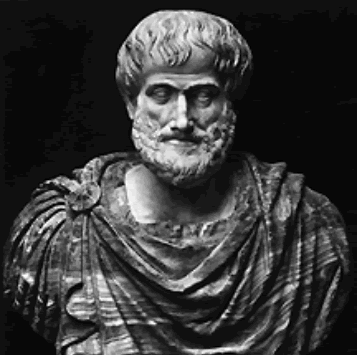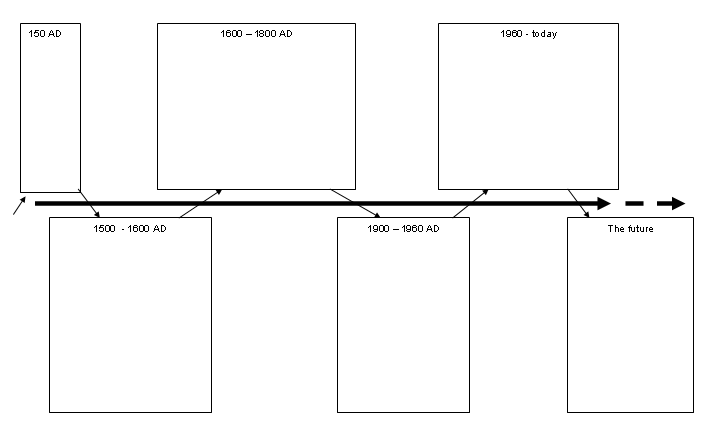SCIENCE
ENHANCEMENT PROGRAMME |
||||||||
 |
||||||||
| quick link: menu | intro | D | E | F | G | ||
|
||
|
Developed
by Joanne Ladds. Sc4, Earth and Beyond Huntington School, York
This set of four lessons aims to get pupils thinking about how
ideas about space have developed and changed. Pupils consider
questions such as, ‘Have you ever wondered who came up with
the very first ideas about space?’ ‘Where did these
ideas come from?’ ‘Did they carry out experiments?’
‘Were they always right?’ ‘Did people believe
their ideas?’
Objectives • that different ideas/theories about space have been put forward at different times; • to organise themselves to carry out a programme of research using secondary sources such as the Internet and library books.
• be able to describe, drawing on examples, how ideas develop with time and as more/different experimental (observed) evidence becomes available; • have located information about their research topic. At the very least they should have found some websites or references to look at in the next lesson.
• Set the scene through a whole class discussion, encouraging pupils to say what they know about space and how they know these things. Pupil activity sheet 1 can be used to focus discussion. • Introduce pupils to the names of scientists and space missions with key dates. A PowerPoint presentation could be used to introduce pupils to some early and conflicting ideas about the Solar System. (Slides 9-14 of the PowerPoint presentation provided as part of the Keele University materials can be used for this.) Describe how to carry out the research, including time-scales. • Organise pupils into groups and give topics for research. Issue the guidelines (pupil activity sheet 2) and ask pupils to read these to establish what must be done. • Ask pupils to devise a plan, e.g. who will do what, and start searching for information (e.g. using what computers and books are available). • Plenary: remind pupils of the questions they are trying
to answer (refer to the guidelines). Ask for an interesting piece
of information from two of three groups to illustrate this. Objectives • that different ideas/theories about space have been put forward at different times; • to organise themselves to carry out a programme of research using secondary sources such as the Internet and library books; • to carry out a focussed search strategy (using ICT) to select and use information appropriate to the task.
• describe, drawing on examples, how ideas develop with time and as more/different experimental (observed) evidence becomes available; • communicate the information they have researched, demonstrating understanding; • recognise that information can be described and presented in different ways. Teaching Sequence • Briefly remind pupils of the task and time scale for the work. Refer them to the guidelines. • Pupils carry out research (using the Internet etc). A list of suitable websites can be found under the heading ‘Resources’. • Groups produce a press briefing on their chosen scientist’s/mission’s discoveries and start to devise an interview script. The press briefings should be sent to the group that will interview them (the teacher will probably want to organise this). Pupil activity sheet 3 helps guide this activity. • Remind pupils that in the next lesson their interviews
will be videotaped and so everything must be ready. They can continue
planning for the interviews for homework, e.g. by thinking of
additional questions they might ask having read the press briefing
notes. Objectives • to write useful and appropriate questions so that they can understand scientific findings and ask about the evidence on which these are based; • to communicate about scientific ideas and the evidence/thinking on which these were based.
• describe, drawing on examples, how ideas develop with time and as more/different experimental (observed) evidence becomes available; • describe how the information they have researched relates to the other research; • communicate their ideas and information and theories effectively.
• Begin by giving pupils time to consider the press briefing that they received from the group they will interview, and to decide on the questions they wish to ask. Pupil activity sheet 4 provides guidelines for interviewers and sheet 5 provides guidelines for interviewees. • Rearrange the groups so that they consist of two interviewers and two interviewees. Groups can carry out a quick rehearsal. This provides an opportunity to set up the video camera • Groups carry out their interviews in the order they would appear on a timeline. Five minutes for each group should be ample. Video each interview. • Pack away and seek feedback from pupils about how they
felt about the activity and what they got out of it. Objectives • ideas about space and the Solar System have changed and developed with time; • these ideas are being used to enable further exploration and space travel; • experiments and observations are important to test existing theories and ideas and propose new ones; • scientific knowledge never has been and never will be static.
• describe, drawing on examples, how ideas develop with time and as more/different experimental (observed) evidence becomes available; • describe how the information they have researched relates to the other research; • communicate their ideas and information and theories effectively; • recognise that discoveries, ideas and theories may conflict with beliefs and traditions of the society in which people live.
• Explain the objectives for the lesson and give out a timeline starting with Ptolemy in 150 AD and the idea of the Earth-centred universe. Ask pupils to record brief notes on discoveries on pupil activity sheet 6 as they watch the video made in lesson 3. • Pupils watch the video and enter notes onto their timeline (pupil activity sheet 6) as they do this. • The following discussion should focus on how ideas have
changed as new evidence and new ways of seeing the Solar System
have evolved over time. The discussion should also highlight that
new discoveries are often contentious and conflict with peoples’
beliefs. The starters and plenaries for lessons are key to keeping these lessons focused and pupils on task. The teacher must establish with pupils that the purpose of the lesson is for them to see how ideas about space and the Solar System have developed and changed as a result of the different observations, thinking and evidence made by, philosophers, scientists and, more recently, from space missions. The importance of careful observation and experimentation should be highlighted, as should the role of newly available technologies. Some of the topics are more difficult to research than others. In general, space missions are broader and so could be given to higher attaining pupils. In addition, the complexities of the theories developed by Einstein require a more able group to work on them. In this way it is possible to differentiate the lesson. In addition, a writing frame version of the guidelines could be used in booklet form for lower attaining pupils. If you wish to condense the lessons, or ICT facilities are not available, pupils could be provided with information sheets to read about a scientist, philosopher or mission. This would change lessons into comprehension style exercises, but still very useful. (It should be noted that the pupils were particularly enthusiastic in the lessons described because they were using the computers, they enjoyed the freedom of this type of research and particularly being video taped and seeing the result).
Equipment For all lessons the teachers will need an OHT and or data projector if using PowerPoint. Lessons 2&3 will need access to the Internet and so could be taught in an ICT suite. The teacher might also wish to use this for lesson 1. Alternatively, the lesson could be taught in the library using a mixture of book and ICT resources. A video camera is needed for Lesson 3 and a video player and screen or TV for lesson 4. Worksheets Websites Listed below are websites providing information on: Philosophers, Scientists and Space Missions that were used in developing these lessons. These are arranged according to how they might appear on a timeline of discovery.
1543 – Copernicus: Idea of a Sun-centred universe. http://www-gap.dcs.st-and.ac.uk/~history/Mathematicians/Copernicus.html http://www.blupete.com/Literature/Biographies/Science/Copernicus.htm http://es.rice.edu/ES/humsoc/Galileo/Things/copernican_system.html http://es.rice.edu/ES/humsoc/Galileo/Catalog/Files/coprnics.html http://csep10.phys.utk.edu/astr161/lect/retrograde/copernican.html http://www.bj.uj.edu.pl/bjmanus/revol/titlpg_e.html http://www.britannica.com/eb/article?eu=108021 http://www.phy.bg.ac.yu/web_projects/giants/copernicus.html http://www.connect.net/ron/copernicus.html http://www.rit.edu/~flwstv/copernicus.html 1609 – Galileo: made a telescope with 20 x magnification and discovered satellites orbiting Jupiter. In 1616 he was ordered to stop supporting the Copernican theory and was imprisoned for his beliefs that challenged the established teachings of the Church. http://www-gap.dcs.st-and.ac.uk/~history/Mathematicians/Galileo.html http://www.lucidcafe.com/library/96feb/galileo.html http://www.pbs.org/wgbh/nova/galileo/ http://www.utm.edu/research/iep/g/galileo.htm http://www.hao.ucar.edu/public/education/sp/images/galileo.html
http://www-gap.dcs.st-and.ac.uk/~history/Mathematicians/Halley.html http://www.solarviews.com/eng/halley.htm http://es.rice.edu/ES/humsoc/Galileo/Catalog/Files/halley.html http://csep10.phys.utk.edu/astr161/lect/comets/halley.html http://antwrp.gsfc.nasa.gov/apod/ap960706.html http://scienceworld.wolfram.com/biography/Halley.html http://www.geocities.com/CapeCanaveral/Hangar/6580/webdoc2.htm http://www-gap.dcs.st-and.ac.uk/~history/Mathematicians/Einstein.html http://www.aip.org/history/einstein/ http://www.pbs.org/wgbh/nova/einstein/ http://www.humboldt1.com/~gralsto/einstein/einstein.html http://antwrp.gsfc.nasa.gov/diamond_jubilee/1996/hubble_nas.html http://www.pbs.org/wgbh/aso/databank/entries/bahubb.html http://travisdenardo.tripod.com/hubble/ http://nssdc.gsfc.nasa.gov/planetary/lunar/apollo.html http://www.lpi.usra.edu/expmoon/apollo_landings.html http://www.hq.nasa.gov/office/pao/History/alsj/frame.html * http://www.astronomytoday.com/exploration/apollo.html#top http://www.nasm.si.edu/collections/imagery/apollo/apollo.htm http://voyager.jpl.nasa.gov/science/planetary.html http://www.netmoon.com/galaxy/missions/voyager.htm 1995 – Galileo mission: orbiting Jupiter. http://galileo.jpl.nasa.gov/ http://nssdc.gsfc.nasa.gov/planetary/galileo.htmlhttp://www.solarviews.com/eng/galileo.htm 1998 – Water on the Moon: US Lunar Prospector. http://nssdc.gsfc.nasa.gov/planetary/ice/ice_moon.html http://www.windows.ucar.edu/tour/link=/headline_universe/moon_ice.html http://www.pbs.org/newshour/bb/science/jan-june98/moon_3-6.htm 2004 – Mars: landing on mars in search for other life forms. http://athena.cornell.edu/ http://www.beagle2.com/index.htm http://www.msnbc.msn.com/id/4202901/ http://www.windows.ucar.edu/tour/link=/mars/mars.html
http://www.space.com/futureofflight/ http://members.lycos.co.uk/spaceprojects/spacefuture.html http://www.spacedaily.com/news/oped-04b.html http://www.thespacesite.com/space/future/intro.php http://www.aero-space.nasa.gov/curevent/tgir/2003/ppt/mahone/mahone.pdf General website link: http://www.windows.ucar.edu/tour/link=/people/people.html
The History of Ideas about Space Where did these ideas come from? Who had the ideas? When? Did people carry out experiments or just have thoughts? Were
they right? Did people always believe them? Some of the first ideas about space came from the Greek Philosopher (thinker), Aristotle, who lived between 384 and 322 BC. He was one of the greatest thinkers of all time. Since then ideas about space have developed and changed to what we know and learn about today.
Your first task is to find out all you can about a scientist, philosopher or space mission. Try to find as much detail as you can, for example: • When did the discovery/mission take place?
Pupil activity sheet 3: The History of Ideas about Space Producing Your Press Release Scientists today often produce a brief summary of their work so that they can send this to newspapers and TV stations or publish it on the Internet. This is called a ‘press release’. Someone interested in their work will read the press release and may want to interview them for a TV broadcast or to write an article in a newspaper. Your group’s task is to produce a press release imagining that you have discovered new ideas or knowledge and must tell the world what you have discovered. Your press release must be short, interesting and easy to read. Think about: • making clear who did the work, where and when; Pupil activity sheet 4: The History of Ideas about Space Members of your group will interview a scientist, philosopher or member of a space mission from another group. You will have a maximum of 5 minutes for the interview. The interview will be recorded on videotape for transmission on a news programme. 1. Read the press release from the group you will interview. 2. Think about questions you would like to ask them – write them down. Here are some things to think about. • What is new about their discoveries or ideas? 3. Put your questions into an order. People often feel nervous
at the start of an interview so think about asking something easy
and comfortable at the start. Always thank people and wish them
well at the end of the interview. Pupil activity sheet 5: The History of Ideas about Space
(2) Guidelines for interviewees Members of your group will be interviewed as a scientist, philosopher or member of a space mission. You will be interviewed for a maximum of FIVE minutes. The interview will be recorded on videotape for transmission on a news programme. 1. Make sure you know and understand what you (the scientist,
philosopher or person from a space mission) have found out.
Pupil activity sheet 6: The History of Ideas about Space Timeline of discoveries about space and the Solar System Note: Time intervals are not equal
|
||
|

